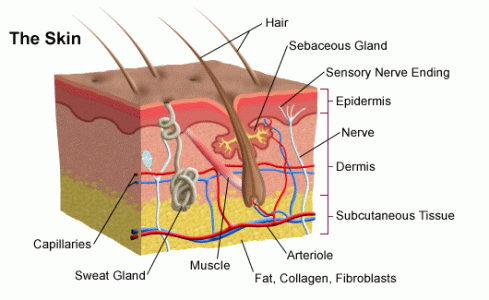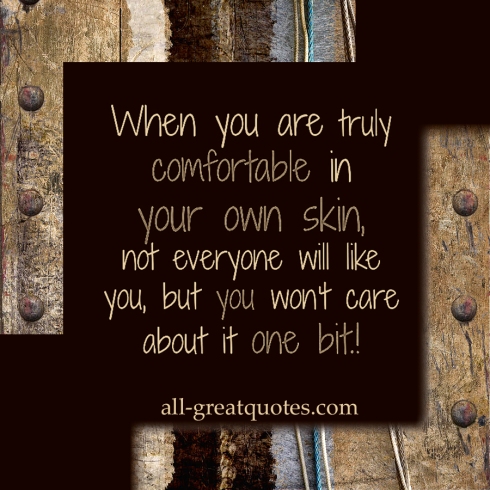I have had many of you ask me about skin issues. What to use on the skin, how to soothe skin, protect skin, replenish skin and how to heal skin. So here are some insights into nutrients to nourish skin from the inside and some ways to keep it healthy on the outside. Of course everyone is different, this is generalised information. If you want a more personal plan please contact me. Also if you are pregnant or breastfeeding, have a chronic issue or a condition getting worse, please contact your professional.
Naturopath’s work with Herrings Law of Cure. This essentially means the following;
- Symptoms of a chronic disease disappear in definite order, going in reverse and taking about one month for every year the symptoms have been present.
- Symptoms move from the more vital organs to the less vital organs; from the interior of the body towards the skin.
- Symptoms move from the top of the body downward.
This means that sometimes in order to ‘cure’ something the symptoms will sometimes come back, or it may need to get worse to get better. If it is a skin problem then you have to promote skin cell and oil production and reduce the external factors potentially affecting the skins environment. So I will be taking about supporting the digestive system in order to acquire the necessary nutrients and excrete toxins, the immune system to help support the skins barrier response to germs and bacteria. and finally the nervous system to help the body’s messages from the skin nerve cells get through to the brain.
The Skin is your largest organ. If laid out flat it is about 1.5-2.0 square metres.. It has many jobs, from temperature regulation; it is sensory organ relaying information to the brain through its massive number of nerves in the dermis layer, synthesises Vitamin D, repels water and forms an integral barrier between your body and the outside world. It’s health reflects your inner health and is also responsible for maintaining inner health. Environmental, behavioural, emotional and physical factors can largely benefit or disadvantage the Skin’s health. It has protective, absorbing and excretory functions. It excretes sweat and oils. It is very closely linked to the gut and the lungs, other excretory organs.
For Example; Suppression of symptoms in the case of Eczema may then become Asthma. It is a common following condition. Steroids and steroidal creams thin the skin and suppress the actions of the body’s immune system to create inflammation which is crucial to the healing process. Thus making the body more susceptible to further allergies and the skin less able to renew making the next bout of eczema worse and possibly spread to other areas (the body’s way of giving you a sign that the treatment is not working). It also creates a further toxic environment in the body disrupting the liver’s functions and thus creating a vicious circle within the body.
All the Body’s systems work simultaneously. If something is not being excreted through the gut, it will try to excrete it through the skin. if the Skins functions are somewhat suppressed it then becomes the lungs turn. The body is excreting toxins and by products of the immune system as well as general waste products. If these products are not excreted by the digestive system they continue to circulate in the body putting excess stress on the liver and immune system making the body’s environment more toxic. Fibre is essential, food such as legumes and fruit and vegetables help to cleanse the colon and prevent re-circulation of toxins therefore reducing tissue toxicity and clearer, brighter skin. A daily green juice can help to add fibre and nutrients such as b vitamins and anti-oxidants (here).
Skin is made up of two layers. The surface Epidermis containing nerves, Melatin pigment for skin colour and is regularly replaced. The layer underneath is the Dermis containing closely woven connective tissue, nerve glands, blood vessels, lymph vessels and hair follicles. Health of both layers is paramount. The body needs to be able to excrete oil to keep the hairs (on your head and body) healthy and helps form a barrier to water, suns rays, bacteria, parasites and to protect the glands below. Sweat helps the body maintain body temperature as well as excreting waste. Hence why an anti-perspirant can contribute to the body’s toxic environment. As well as absorbing products from our environment to communicate messages to the body, for example sunlight to communicate the increase of pigment formation to help change the skin colour to protect from the sun’s rays. The Ph of skin is also very important, to help promote the life of the bacteria on the skin providing a service to the body and preventing the proliferation of the bacteria that is threatening the body’s health. Becoming a barrier to germs both physically and Chemically. Several thing can upset this balance.
Environmental such as chemicals in the air or products that we use both skin and cleaning to the addition of chemicals in our foods that can be avoided that then need to be processed and excreted (here to read about reducing chemical overload). Behavioural such as number of times we bathe (too much or too little), how we apply moisturiser (needs to be massaged in) to how hard we scrub out skin (making it too oily or too dry) to the products that we use. Lastly Emotional. We have seen in previous posts, the affect stress has on the digestive system and other systems to absorb and assimilate the nutrients necessary for skin production, oil production and even sweat production. Also those people who let things ‘get under their skin’ also can help remove physical issues by addressing those emotional ones. In particular; repressed anger creating a ‘hot’ environment thus potentially resulting in dry skin. Whatever the issue, you need to repair all of the factors from these areas. Reducing Environmental factors but not addressing the emotional ones may result in a reduction of symptoms, but never a real cure and indeed may push the problem deeper.
Nutrients essential for Skin cell production.
A diet dense in nutrients and water content is necessary for skin healthy. Good fats and Proteins are also integral to this.
Fats are essential for skin health. Essential fatty acids (EFA’s) help to naturally reduce inflammation and are necessary for cell production. They form the cell wall along with protein which gives each cell a strong protective layer. When producing skin cells in the case of eczema this is paramount. Fats also help form a barrier on the skin to stop outside stresses such as detergents, cosmetics, dust etc from crossing into the bloodstream adding further stress to the immune system. Oily fish (salmon, sardines, mackerel), Flax seed oil, borage oil and olive oil are key oils along with coconut oil for skin health. Dont forget sea vegetables.
Coconut or Medium chain fatty acids also help by providing a protective layer (coconut oil used frequently on the skin may help protect from the sun’s harmful rays- but also stay in the shade and use layers for protection so to never get burnt). They also strengthen skin cells and can help speed up healing. It also has an antibacterial and anti microbial effect to help the skin protect from germs. 1 tsp massaged in from top to bottom every day should suffice. 1tbs Taken internally will also have an effect on skin cell production. It can also be massaged into moles, bruises and dry parts including cuticles.
Proteins. Having a diet rich in protein will help provide a strong cell wall. Protein provides the body’s building blocks.
Probiotics are essential to balance gut health and to promote the colonisation of good bacteria to help with digestion and to kill off the over proliferation of ‘bad’ bacteria. This will boost the immune system. Kefir is a great source of beneficial bacteria. Also adding prebiotic’s into the diet daily
Vit A and Betacarotene: Absolutely necessary for skin production and a powerful antioxidant necessary for skin cell health.apricots, barley grass, butter, carrots, fish liver oils, green leafy veg, egg yolk and liver (soak the apricots and either add to porridge or give as a finger food- also add liver to mince and make burgers. Use organic lambs liver if possible (most nutrient dense as sheep are still able to graze and eat grass)
Vit D: Also helps the immune system to differentiate cells. Sources include synthesis through sunlight on skin (10 mins of 40% of body naturally exposed to sunlight without burn-before applying sunscreen). Good sources are fish liver oils, butter, egg yolk and sprouted seeds- good finger foods look into sprouting chickpeas, lentils and can use alfalfa also
Vit E: stops cell proliferation by stabilising normal growth maintenance. Also improves blood flow. Sources include almonds, apricot oil, beef, egg yolk, hazelnuts, sunflower seeds and wheat germ.. Otherwise you can also use almond oil either topically or in porridge. Vit E can be absorbed through the skin and can be bought in capsules.
Zinc: Absolutely necessary for skin health. In cell production to enzyme production in the digestive system to the immune system.Found in beef, egg yolk, ginger, lamb, sunflower and pumpkin seeds, seafood, whole grains.
Mag: Sources include: Almonds, cashews, cocoa, cod, eggs, seeds, parsnips, molasses, kelp and figs .
Bioflavenoids: Build connective tissues Sources; apricots, apples, blue, red and black berries, cherries, citrus fruits, green growing shoots of veg, onions, garlic, rosehips.
Cabbage, cabbage juice and the pith from oranges and grapefruit are really good for maintaining skin structure and elasticity.
Watermelon is great for added vitamins and essential water content.
Herbal teas work well both as nourishing and soothing tonics but also boost hydration levels. Oat Straw tea– High in Silicon which is essential for skin tone. Comfrey tea is also very soothing and nourishing for skin, particularly during outbreaks. Nettle tea good for irritated conditions especially children’s eczema (breastfeeding mothers can drink it or children over 6 months can have a little diluted in some water or milk), Alfalfa tea, Burdook root is excellent for dry scaly eruptions, Chamomile tea, Tulsi tea both for soothing emotions in stressful times and Rosehip tea. Calendula is one of my top 5 healing, calming and nourishing teas.
Some Skin conditions and their potential origins:
Dry Skin; may result from dehydration, poor nourishment (diet low in efa’s or the ability to digest and absorb them), change in weather/humidity, soap or chemical exposure, hormonal unbalance.
Dandruff; can be bacterial or a form of dermatitis. Diet high in saturated fats and low in efa’s, dehydration, food allergies, bacterial imbalance in the gut and chemical irritant from shampoos etc.
Acne; Various reasons for acne include poor nutrient profile, hormonal disruptions, allergies, bacterial dysbiosis, dehydration, poor fat intake.
Eczema and psoriasis; allergies, poor nutrient intake and absorption, hormone disruption (particularly in stressful situations) bacteria dysbiosis




1 comment
Comments feed for this article
January 20, 2013 at 9:46 pm
Skin Treatments « LoulaNatural
[…] previous post (here) mentioned nutrients necessary to build and repair skin from the inside. This post is about […]